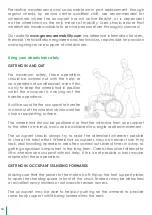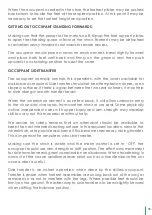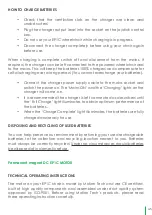
Users should understand that the greatest risk in transportation is when
embarking and disembarking of the wheelchair occupant. A preferred initial
consideration is for the wheelchair occupant to transfer to a standard vehicle
seat during a journey, with the wheelchair stored separately and securely.
This however is often not practical when other aspects of use are taken into
account.
If transfer is possible the vehicle seat should be suitable for the occupant to sit
in throughout the journey.
The occupant should also be able to carry out the transfer operation with
minimal handling assistance from carers, in the restricted vehicle space.
Carers should not get involved in unsafe lifting practices.
Storage areas in vehicles should be secure. A flying wheelchair or component
part can cause a lot of damage and injury if it strikes anyone.
For the independent occupant who chooses to travel in a wheelchair, good
accessibility into confined spaces is important when using the allocated
spaces on public transport, such as low floor buses.
USE OF FOUR POINT TIE DOWNS AND OCCUPANT RESTRAINTS IN VEHICLES
Greencare wheelchairs incorporate integrated attachment points for
wheelchair and occupant restraints. Training is available for carers and
transport providers by safety restraint manufacturers, such as Unwin Ltd.
Attention should be given to the following important safety guidelines:
•
The wheelchair should be secured to the floor in a forward-facing
direction.
• The wheelchair and occupant should be secured to the vehicle
independently.
• The wheelchair tie down should be secured to the points indicated
on the frame.
• The occupant restraint is routed through the guides on the chair
frame.
• More than one person should not occupy the wheelchair.
• Upper occupant restraint should be secured to the vehicle above
shoulder height.
• No component of the restraint should pass through the wheelchair
wheels.
41









































